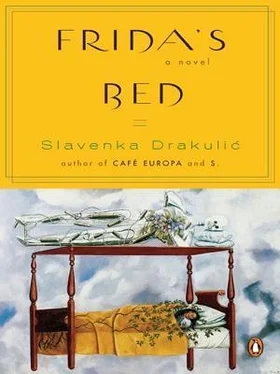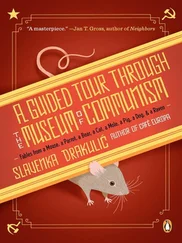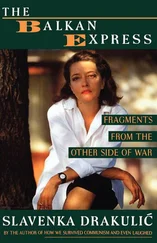Her mother, she recalled, stood by her bed wearing a dark brown satin dress that accentuated her pale complexion. She had not been feeling well for quite some time; she would be beset by acute stomach pains, which would eventually disappear only to reoccur a month or two later. She was also plagued by headaches that would often make her take to her bed for the whole day. They were not close, the two of them; indeed, Doña Matilda was not close to any of her four daughters, with the possible exception of Kity, who was still like a child and never contradicted her mother. There was a void between mother and daughters, a distance that was filled by servants who cooked and washed and took care of them, women whose large languid bodies stood between the girls and their mother. There was too little physical contact, there were too few hugs and embraces. She always felt that her mother was present, but it was as if she were in another room, never completely there, moody, sad and unwell herself.
So she was surprised when her mother brought her the paints and brushes. Frida had never thought of painting. Here, this may catch your fancy, her mother said, painting will help you relax and take your mind off the accident. Frida noticed that it was hard for Doña Matilda to utter the word. Her mother showed her the small lap-easel she had had made so that it could be placed on the bed. She felt a lump rise in her throat and tears sting her eyes. She was grateful to her mother for showing how worried she was about her health.
Her mother did not usually demonstrate love so openly and she was certain that at that moment Doña Matilda believed her daughter would never walk again.
She clasped her mother’s hand and kissed it. Doña Matilda found herself flustered. She stroked her daughter’s brow, turning her head away to hide her emotions. She could not bear to watch her vivacious child lying there so immobile, so hurt and battered and yet so patient. She told herself that everything would be better once Frida was no longer bedridden and they finally removed the cast. She would forget all her pain, her scars would heal and life would pick up where it had left off.
She had been playing various sports, even soccer, since the age of six, and so she was as strong, muscular and quick as a boy. After the accident, when she was bedridden and not allowed to move, she had to unlearn everything she had been taught. She practiced immobility. She practiced endurance. First there was the excruciating pain. Then she was driven mad by having to lie still. Her little childhood friend was not there anymore to help her. But she remembered what her little friend had taught her (lesson number two!): when the pain rivets you to your body you have to step out of yourself if you are to survive. Once again she had to find a way to lie still and at the same time be somewhere else — and someone else. Her mother’s suggestion about painting intrigued her. And when her father came up with the idea of fixing a mirror above her bed so that she could see her own face, she began to paint what was closest at hand — herself.
Ever since the accident, her father had not been himself. He had become more withdrawn than ever; he barely opened his mouth now. Her mother would serve him dinner herself. He would eat alone, not uttering a word, and then shut himself away in his room and play the piano. Don Guillermo came from Europe, from another world and another time, and he never seemed to have completely joined them in theirs. She found his sadness hard to bear. Especially as he had no God to turn to. Sometimes she wondered how her mother could live with such an incredibly introverted, sad man.
At the time I knew too little about men, about living as a couple, about whether it is better for them to be quiet or chatty, she thought, wide awake now. Her room was still cloaked in darkness. But it was no longer the nocturnal, velvety, cozy darkness of the womb. The light seemed to have a life, a mission of its own: to subject her to yet another day.
She was convinced that the demonic pain she had suffered in her leg as a child had been in some sort of preparation for the accident. Engraved in her memory was how she had been left speechless by the first attack. She had yet to accept that pain cannot be expressed in words but only in inarticulate screams. It took time before she could put brush to canvas, and still more time before she could paint pictures that screamed. In place of the screams themselves. In place of verbal descriptions. She owed it to her father, she thought, to the frantic look in his eyes which she would never forget, and to his words: Tell me, tell me!
The first time she picked up the paintbrush to paint she was lying in the same room she had been in as a child with polio, only this time she was condemned to a lifetime of pain. It was no longer just one illness now. The pain had distributed itself throughout her body, taking up its positions in preparation to stay.
Such a long period of immobility had heightened her powers of observation. Nothing seemed simple or small anymore; it was like seeing the world through a magnifying glass. She distinguished almost invisible markings on the seemingly smooth surfaces of the objects in her room. She noticed details she had never paid attention to before: the interweaving thin and thick threads that unevenly coursed the bed linen; the little cracks and crevices collecting dust on the once smooth and white wall; she was bothered by the irregularities in the embroidered roses on her pillow — when, in a moment of inattention, someone’s hand (her mother’s? her sister’s?) had threaded the red just a millimeter off the traced blue line, a moment when someone had perhaps entered the room and called her name, disturbing her concentration. There was a light diagonal streak down the dark brown leg of the little table, as if a cat had scratched it. But why would a cat scratch the table leg? she wondered. And that thought transported her into another world, imagining hands, imagining cats.
In her suddenly diminished world, which she felt was getting smaller by the day, she saw faces in a new light as well. She paid more attention to facial features, expressions, grimaces, the different tones of voice and colors of clothes. As if being bedridden somehow made her notice things more and gradually lent the world new, intriguing dimensions.
She saw even herself differently. Looking at her face in the mirror, she noticed that her youthful skin didn’t match her dark, almost scowling gaze. I am getting old, she thought, age is already showing in my eyes. I feel as if I learned everything all at once, in an instant. My friends are gradually becoming women, but I aged instantaneously. It is as if everything has become quite simple and I know that there is nothing there on the other side, because if there were, I would see it, she wrote to Alex.
She was now painting almost every day — sketches, studies and portraits of the people around her, but mostly of herself. This was no longer merely a pastime. Painting completely absorbed her. She assiduously studied the history of European art, especially the work of the great Renaissance masters, and she practiced the steadiness of her hand. She progressed quickly, her hand becoming ever surer, achieving what she wanted ever quicker. She was pleased with the self-portrait she painted for Alex. She sent it to him, out of despair, out of love, out of the need to feel him nearer. She spent words and words on him, she wrote to him every day, but it was not enough. And he wrote to her, but his letters were polite somehow, already distant and cold. As if he had given them to an adult to read before mailing them. Alex was her first love and she could not accept the idea that her accident could drive them apart. Her wretched condition was only temporary; just be patient, Alex, she wrote to him at the beginning. But Alex was drifting away and while she was still recovering he was getting ready to travel.
Читать дальше












